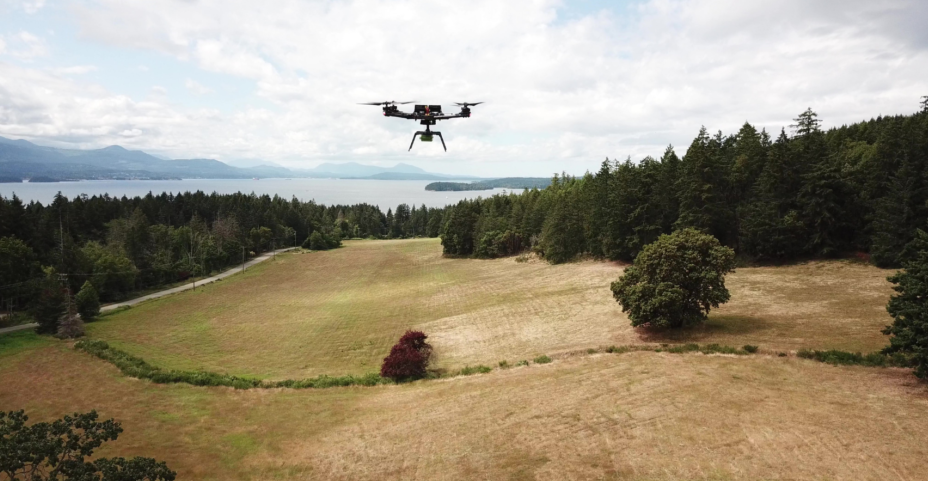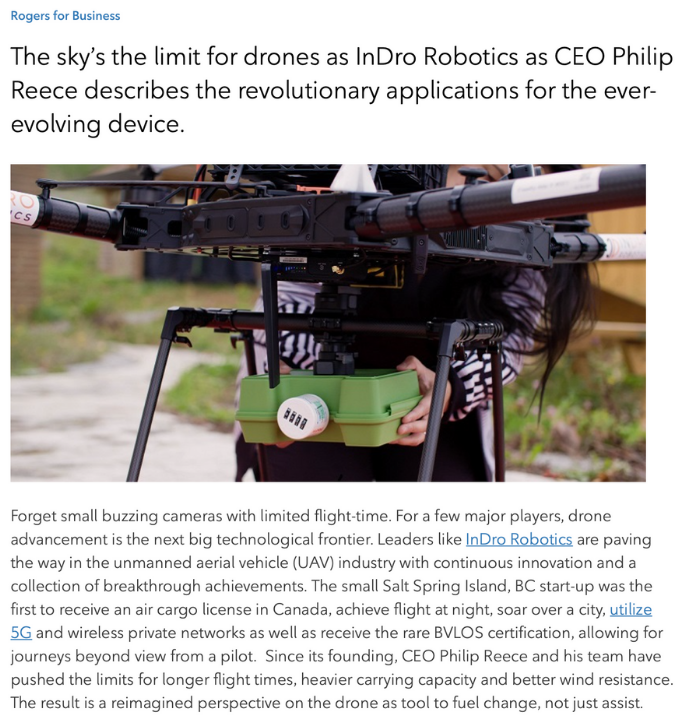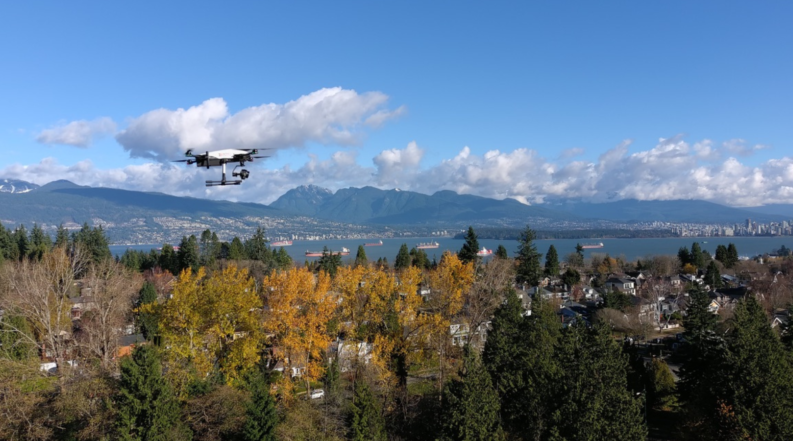
InDro Robotics partners with UBC, Rogers, Honeywell on 5G UAV project
By Scott Simmie
Picture a small fleet of drones, flying over an urban centre. They are connected to pilot-observers – and each other – over a 5G network.
Some are carrying critical documents, others prescription medication. The UAVs are flying autonomously, able to avoid any conflicts both with each other and with traditional crewed aviation. One of the drones is powered by a hydrogen fuel cell.
The energy requirements of each flight – factoring in payload, weather and distance were calculated prior to takeoff. The financial cost of each flight is also known, valuable data as companies weigh the business case of drones versus more traditional deliveries.
Sounds valuable to us. And that’s one of the reasons InDro Robotics is part of an ambitious research project, in conjunction with corporate and academic partners, at the University of British Columbia.
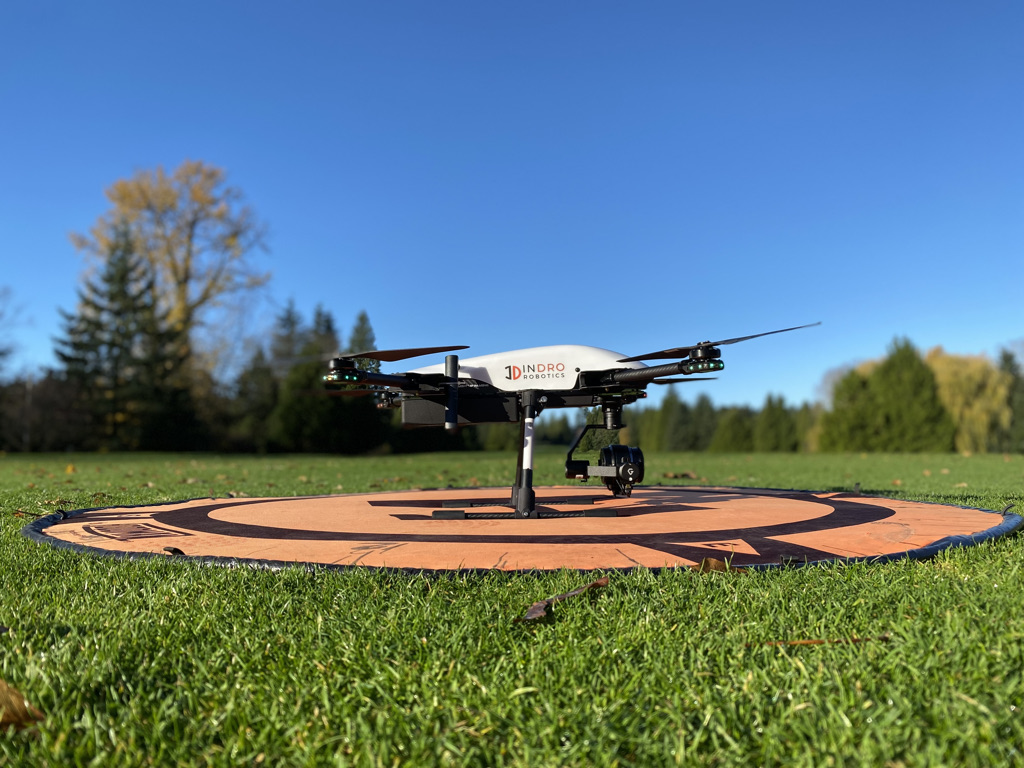
Collaboration
If you’ve been following the work of InDro Robotics, you’ll know that collaboration is a big part of what the company is about.
InDro has partnered with such companies and organisations as NASA, the Canadian Space Agency, Ericsson, the National Research Council – and many others. (If you’re interested in seeing some of our other partnerships, check out the bottom of this page.)
We’re now pleased to announce our latest collaboration: A major project involving the University of British Columbia, Rogers, Honeywell and more.
It’s called the UBC Mini Cities Research project. And it has ambitious goals.
Below: UBC Campus. Photo by Martin Dee / UBC Brand & Marketing

Mini-Cities
Let’s start by taking a look at what the term “Mini-Cities” actually means. For that, we contacted Omar Herrera, Senior Program Manager at UBC.
“UBC is just like a small city,” he says. “It has its own population, its own services, streets, garbage disposal – so it’s like a mini-city, in a way. One of the things we’re interested in with this project is how can we really deploy UAVs in the cities.”
So you can think of the UBC Campus, which is also serviced by a Rogers 5G corridor, as kind of a test-bed to prove the safety, viability and economics of drone deliveries in a major urban centre. What weights and sizes of packages can be delivered and over what range? How many drones can be operated autonomously at a single time over the network? Does 5G connectivity vary with altitude? Can an Unmanned Traffic Management system – to minimise the potential for conflict with low-flying traditional aircraft – be successfully deployed and demonstrated in a mini-city? Can AI use data from previous flights to accurately predict energy demands for future missions? How efficient (and cost-effective) is a hydrogen fuel cell drone when compared with one powered by lithium-polymer batteries?
These are all questions – and there are more – that the project will be answering.
If that sounds like a major task, it is. In fact, InDro has relocated mechanical engineer Keegan Richter from our Vancouver bureau to a lab office at UBC – allowing Richter to work directly with the UBC team and MéridaLabs.
Richter is now InDro’s “traveling scientist,” working on the UBC campus three days a week, connecting with broader engineering departments.” That’s Richter below, on the UBC campus.

“I’m really excited to be working with the MéridaLabs team,” he says. “They’re truly reimagining clean technology.”
Richter is acting as the technical lead for InDro’s proprietary hardware and software (Wayfinder and InDroPilot), serving as liaison between InDro Robotics and other partners, and assisting with project management.
The InDro robotics Wayfinder drone will be flown over 5G using InDroPilot for the first phases of the project. Rogers has supplied a CradlePoint router which will measure and log 5G signal strength along the flight corridor – including at various altitudes. Heat maps created with this data will be used to optimize future flight planning.
“We want to assess the capacity of InDro’s Wayfinder to deliver packages,” explains Richter. “Demonstrating how much, how fast, and how far we can carry essential goods are questions of particular interest to the team.”
A Masters student, working within MéridaLabs, will be crunching the data for energy demands and costs. The goal is to build an AI model that can quickly determine energy needs and ranges for future planned missions. This software could prove to be of great assistance to other UAV companies hoping to conduct deliveries at scale.
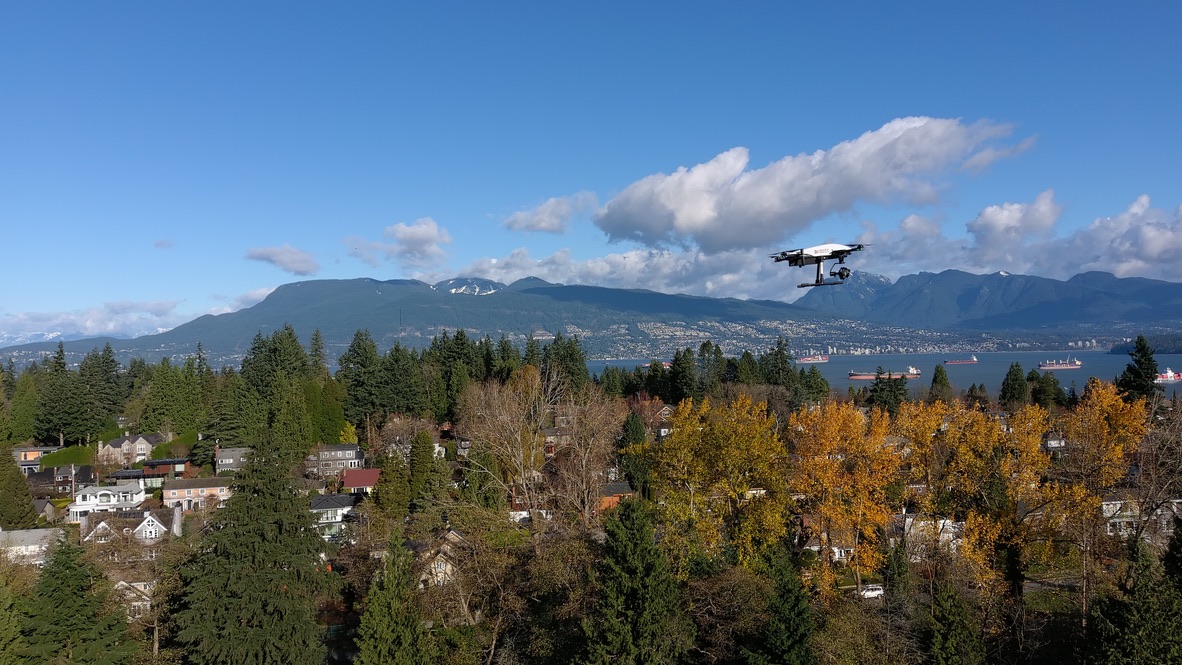
UBC’s Interest
Omar Herrera also has a technical background. He’s a chemical engineer with a PhD in mechanical engineering. He explains that a major project about energy was already underway and that this seemed a logical next step.
“The reason why this all came to be is because we (MéridaLabs) had a project with the University – a large test bed – combining different kinds of energy sources into energy storage. Moving that energy is what really drives us, and our research is related to that.
“One of the visions we have is that transportation doesn’t have to be limited to manned vehicles. And that’s how we got connected with InDro Robotics.”
The project will also capture data to help determine how many drones could potentially be operating simultaneously (and autonomously) in a 5G environment.
“We’re going to look at a few things, including the implications of antennae. Let’s say we have hundreds of drones (in flight) with hundreds of signals underneath. With drones flying autonomously, what would be the threshold for the number of drones that can fly safely (over 5G)?
It’s a good question. And while the project will at one stage involve multiple drones flying simultaneously – there won’t be a real-world test involving hundreds. But Herrera says software developed for the project will be able to predict, based on a small number of drones, what is likely to happen with many more in the air.
You’ll recall Herrera mentioned MéridaLabs is deeply involved with energy and energy storage. This video (which includes drones!) provides a good overview.
InDro’s Take
UBC was North America’s first 5G campus, and this isn’t InDro’s first involvement with the institution. It is, however, the most ambitious.
“This project should produce excellent data – along with further solutions – to enable safe and autonomous BVLOS drone missions and deliveries over 5G,” says InDro Robotics CEO Philip Reece. “We believe the results will be useful not only to project participants, but to the RPAS industry as a whole.
“A world where drones and ground robots carry out important tasks at scale, utilising the bandwidth and power of high-speed networks, is coming. I believe this research is an important part of the way forward.”
Stay tuned. This is a long-term project. But we’ll keep you up to date as we hit milestones along the way.

